We would like to introduce you the five key aspects of the cheese cutting process in Valsana
⏱ 4 MINUTES READING
Every new year we ask our sales network to give us a feeback about the content and the topics of our magazine. One of the requests that touched us was to "disclose something more about Valsana": what we do, in terms of selection, managing products and handling orders, and above all how we do it.
To tell you the truth, we must confess that we are a bit shy and we often take it for granted that the way we manage our processes is the standard. Indeed, being a bit fussy, we are often also dissatisfied with many things. On the other hand, when we have the opportunity to host some visitors, even for quality controls or audits, we often receive lots of compliments.
So, no embarrassment, we decided to tell you how some of our procedures work and who are the guys who work "behind the curtains" to ensure the order fulfillment and the quality standard that we always try to pursue.
In this issue we start from the most sensitive process, the only "real manufacturing" that takes place in our warehouse: the cutting of cheeses. Sensitive, because these products are the only ones to which we apply our own label, on which we take 100% responsibility. For other products, as a distributor, we are anyway responsible for verifying the label printed by the manufacturer, but for fractioned cheeses we take the full responsibility on the label.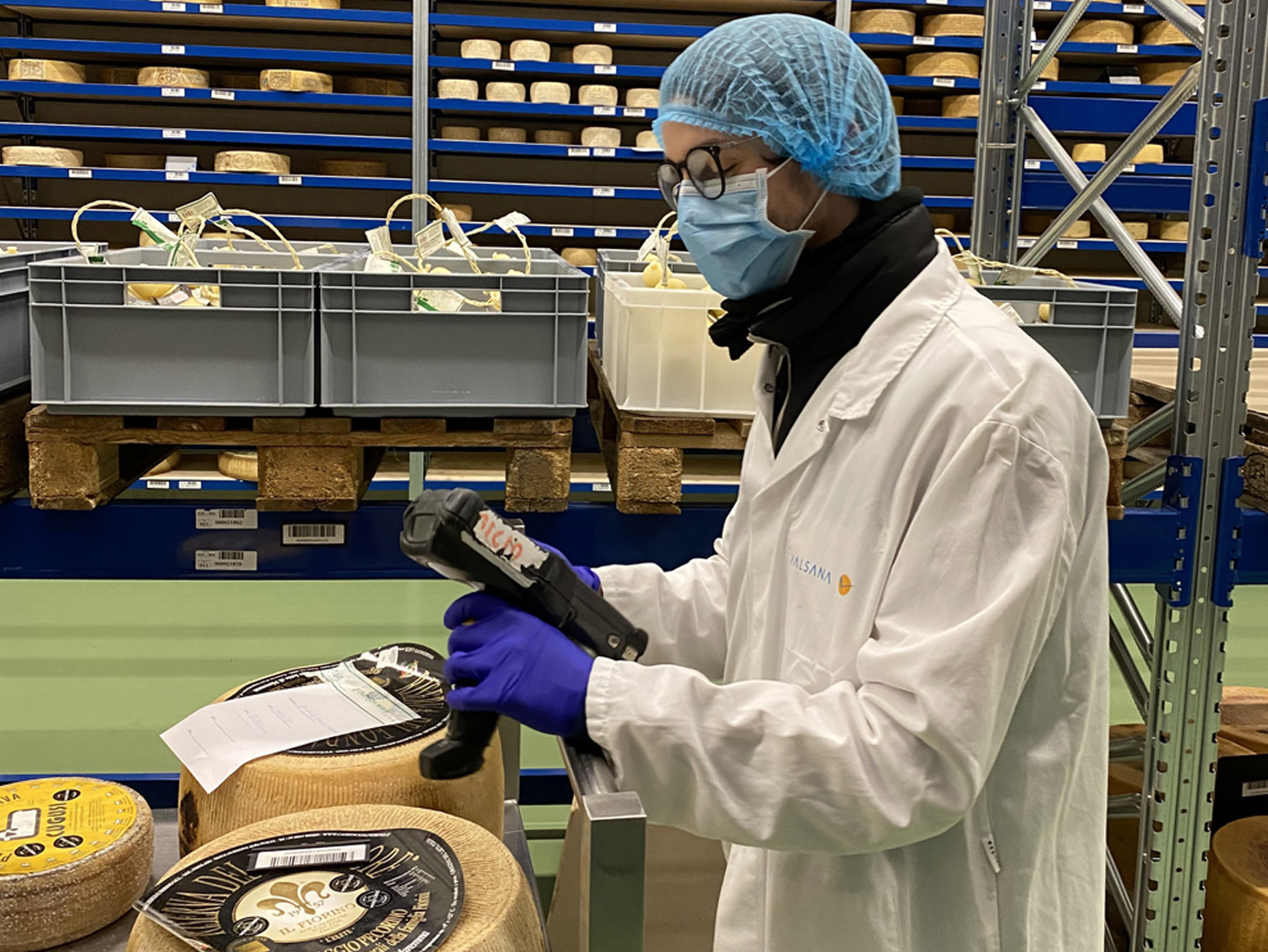 1. PEOPLE'S EXPERTISE
1. PEOPLE'S EXPERTISE
Enrico Salvador, degree in Food Science and Technology, is the person in charge of cheese cutting. We entrusted the responsibility of this process to a very knowledgeable person, since we think that the expertise in evaluating a cheese once it has been cut is critical. Enrico, over the years, has developed an excellent knowledge of both the products and the defects that we inevitably encountered when working with artisan cheeses.
Cutting a cheese made with raw milk, maybe without ferments, is a bit like opening a surprise every time. For this reason Enrico works closely with our Quality Manager, Giorgia Barbaresco, whose office is located near the cutting room: in case of doubts Enrico consults with Giorgia, to evaluate the case together and decide what to do.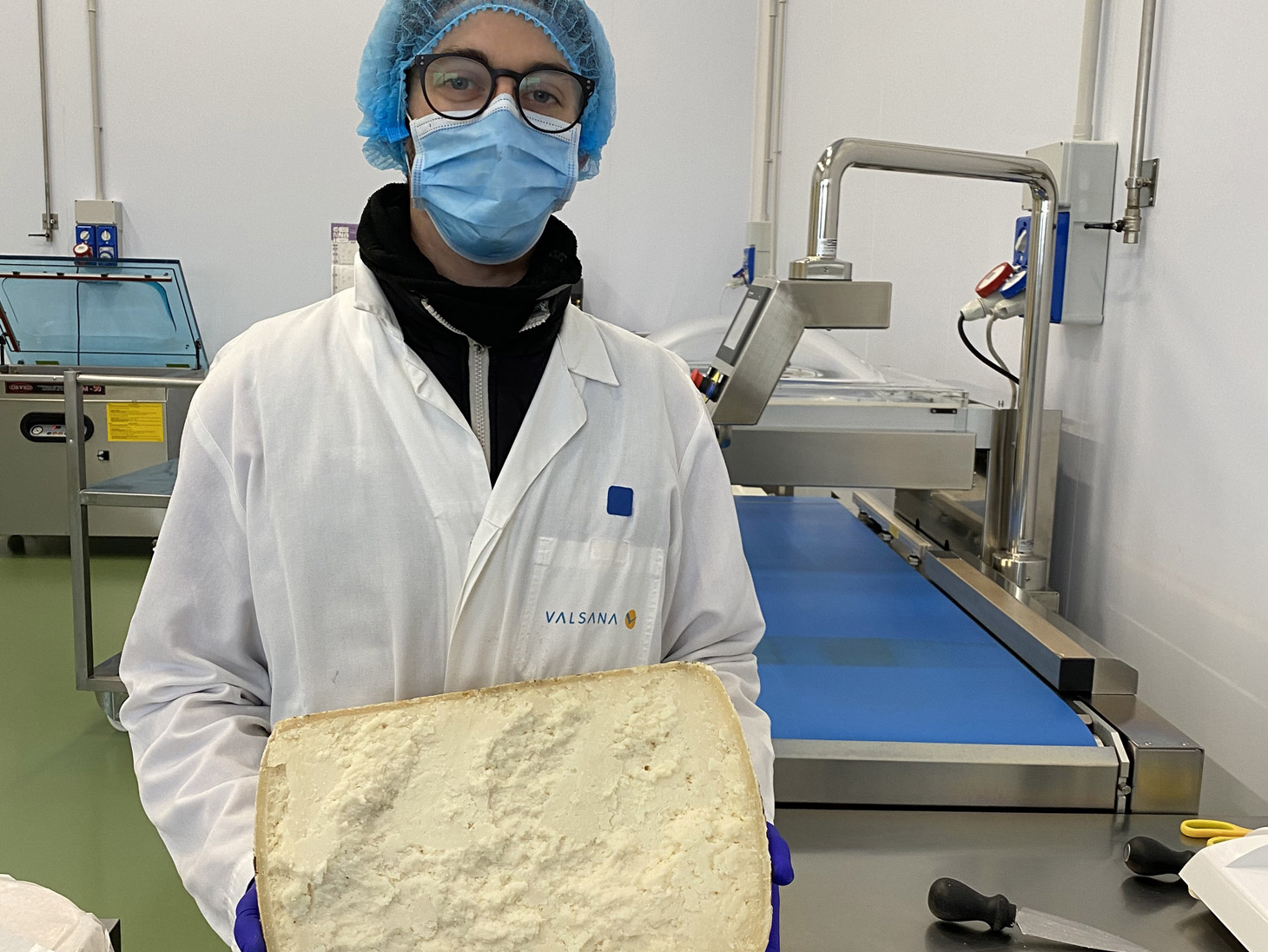 2. SHELFLIFE VS. AVAILABILITY
2. SHELFLIFE VS. AVAILABILITY
Until a few years ago, cheeses were cut on the order, that means a cheese was cut only once we received the order from the customer.
Today this is no longer possible: first of all because of the volumes handled and the reduced time between order and shipment; but also and foremost because of the procedures we set up to avoid possible contamination in cheese cutting. This is why we switched to vacuum pack all fractioned cheeses and we are working together with our purchasing department on the sale forecast, to have a stock always available for picking, trying to optimize the forecast and make the least possible mistakes.
The objective is to minimize the time between when the product is cut and when it is shipped to customers: cheese portions should be available on demand, but as freshly cut as possible.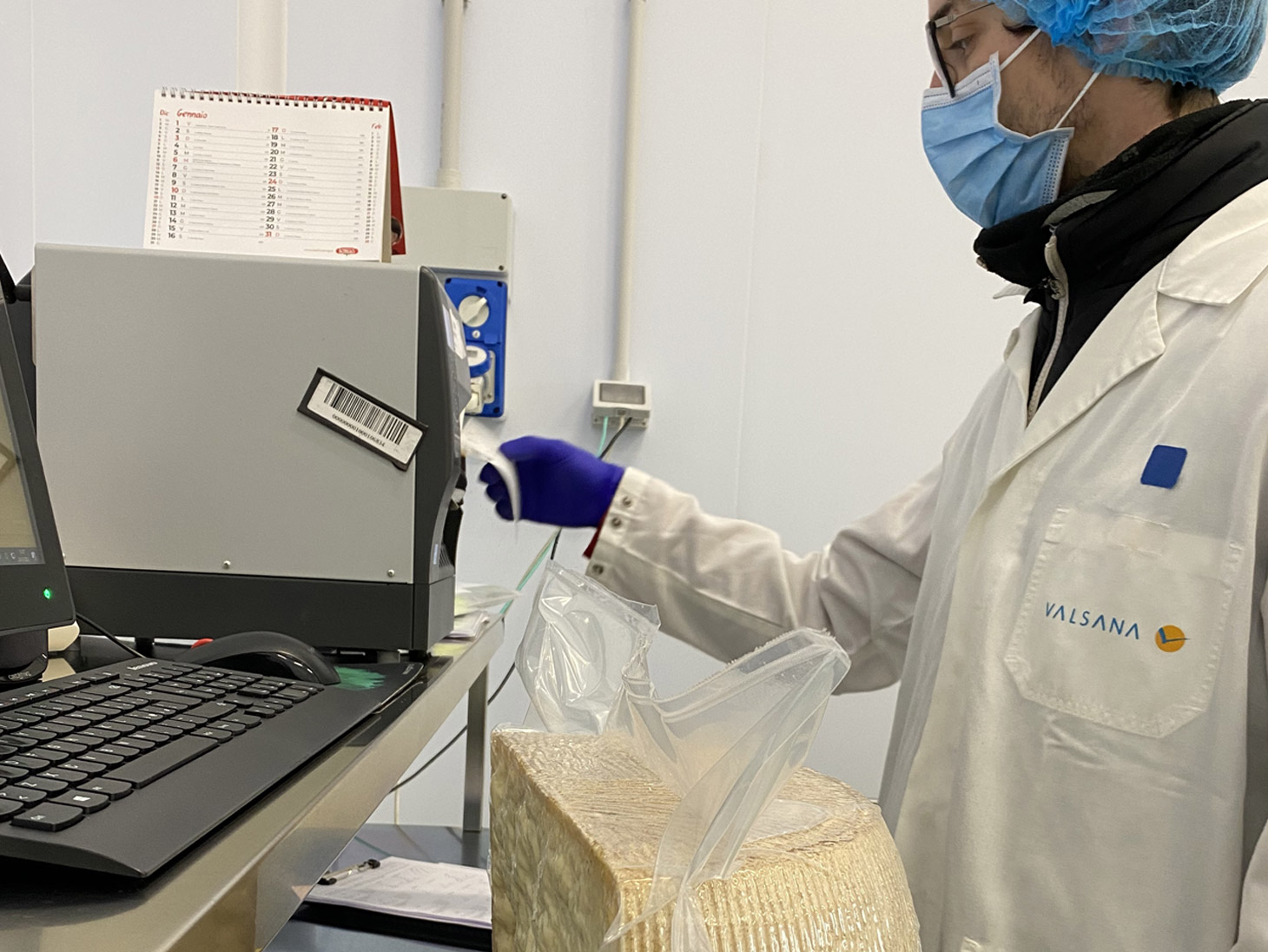 3. SMALL BATCH PROCESSING
3. SMALL BATCH PROCESSING
Enrico's job is made up of many different operations repeated several times during the day: we never cut large quantities of cheeses, but rather prefer to cut small batches of each cheese.
A legacy that we carry from the experience of the IFS-BRC certification - we have been certified from 2013 to 2016 - is cutting homogeneous categories of cheeses. The certification experience has been very formative, although in 2016 we decided to give it up, due to the requirements that had become too stringent over the years, which would have forced us to abandon some of the most artisanal producers we work with.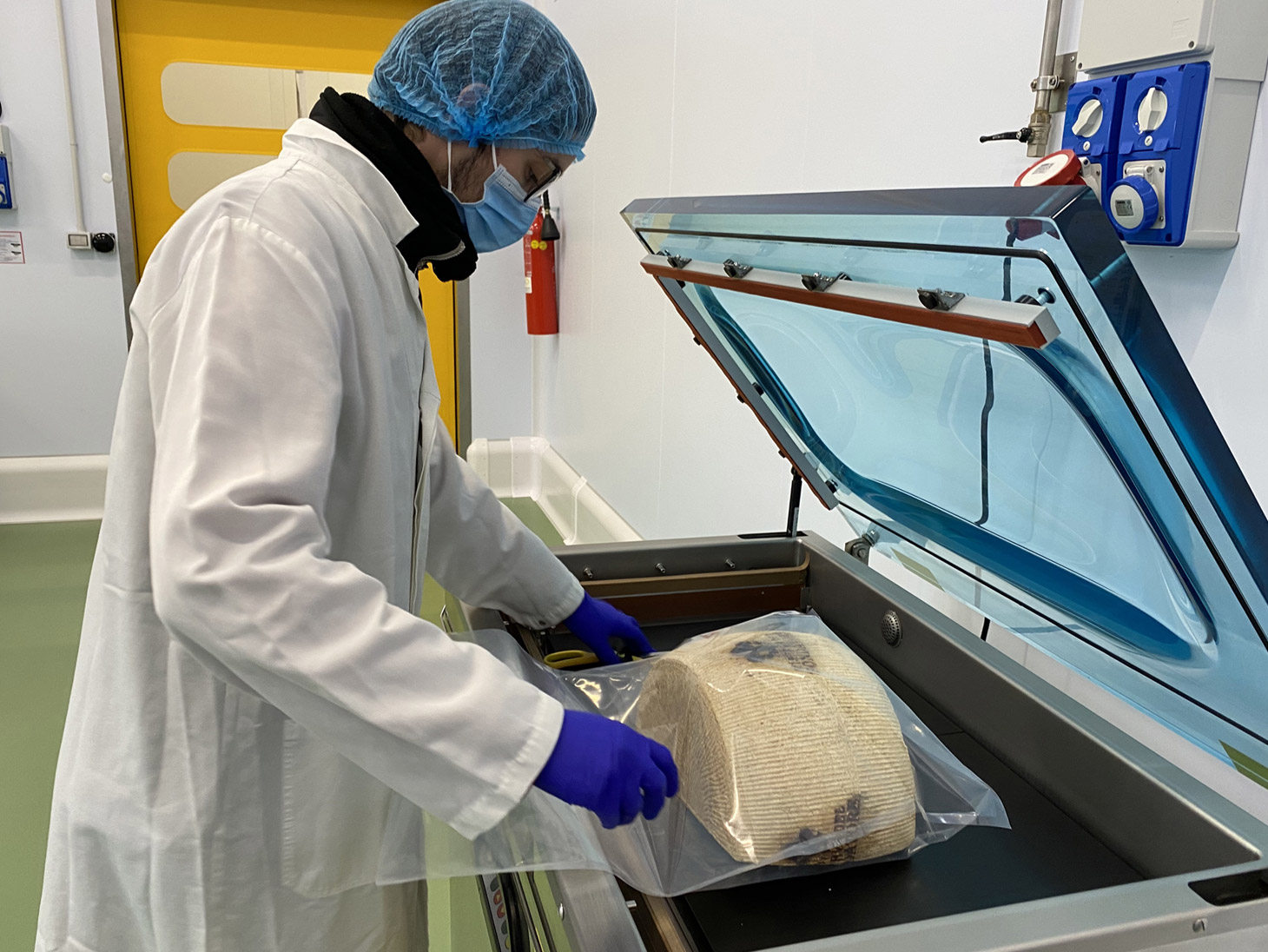 4. PREVENT CONTAMINATION
4. PREVENT CONTAMINATION
Our quality department has divided the 120 cheeses that we cut into 17 homogeneous groups according to the milk (raw or pasteurized), the rind (clean, with mold or washed) and the presence or absence of lysozime (since it is an allergen); blue and refined cheeses form two groups on their own.
Each group is processed separately to avoid contamination between the different types of cheeses. For the same reason, the room is thoroughly cleaned between one process and the next. To verify the effectiveness of cleaning, microbiological checks of the surfaces are also carried out periodically by an accredited laboratory of analysis.
Preventing the contamination of molds, allergens and any pathogens is our priority, and we can guarantee it only by keeping each cutting process separate. This is the main reason that led us to plan cheese cutting as much as possible and it is the same reason that sometimes makes it impossible for us to cut a cheese for a last minute order, even though we may have the whole cheese in our warehouse.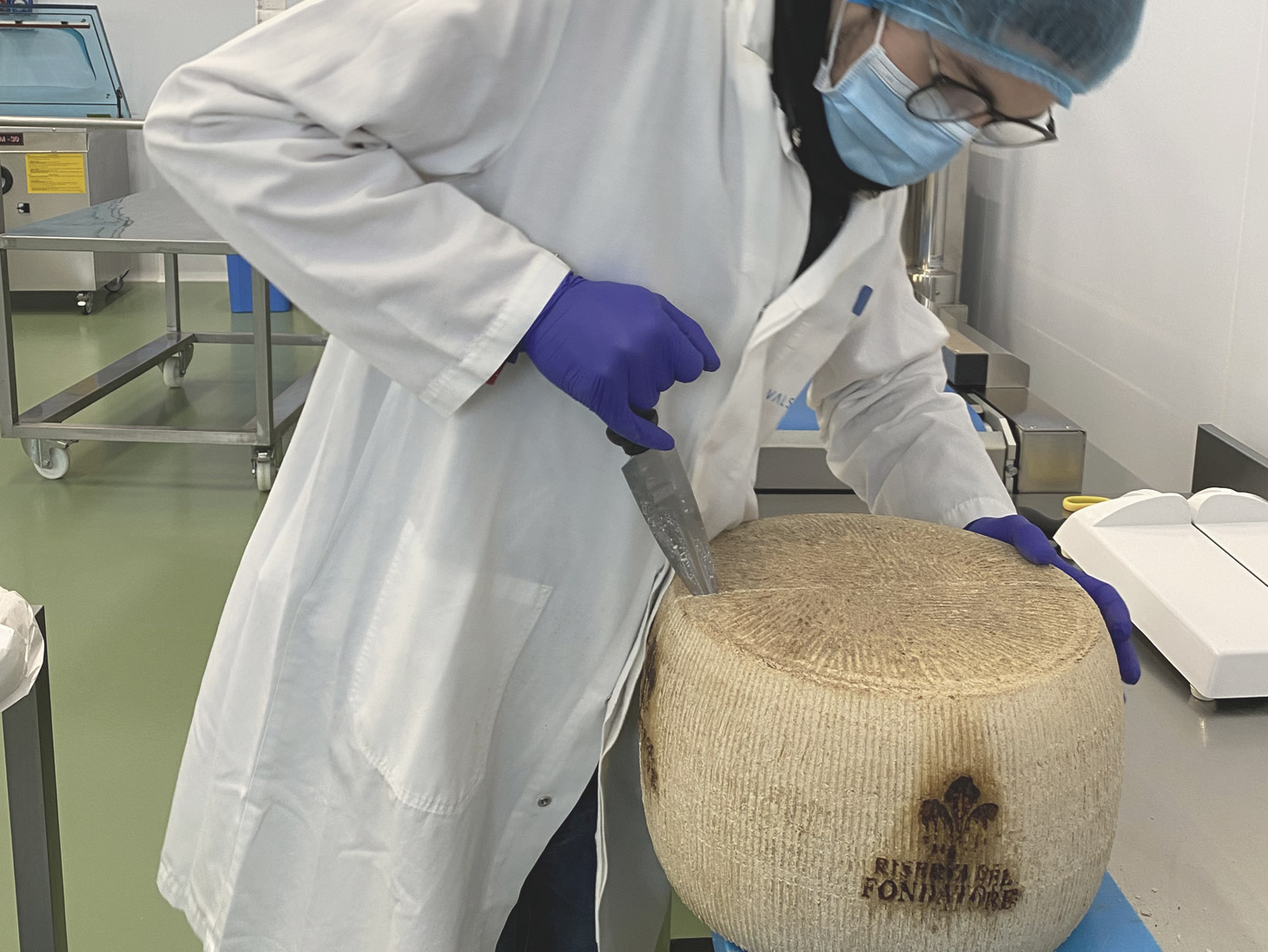
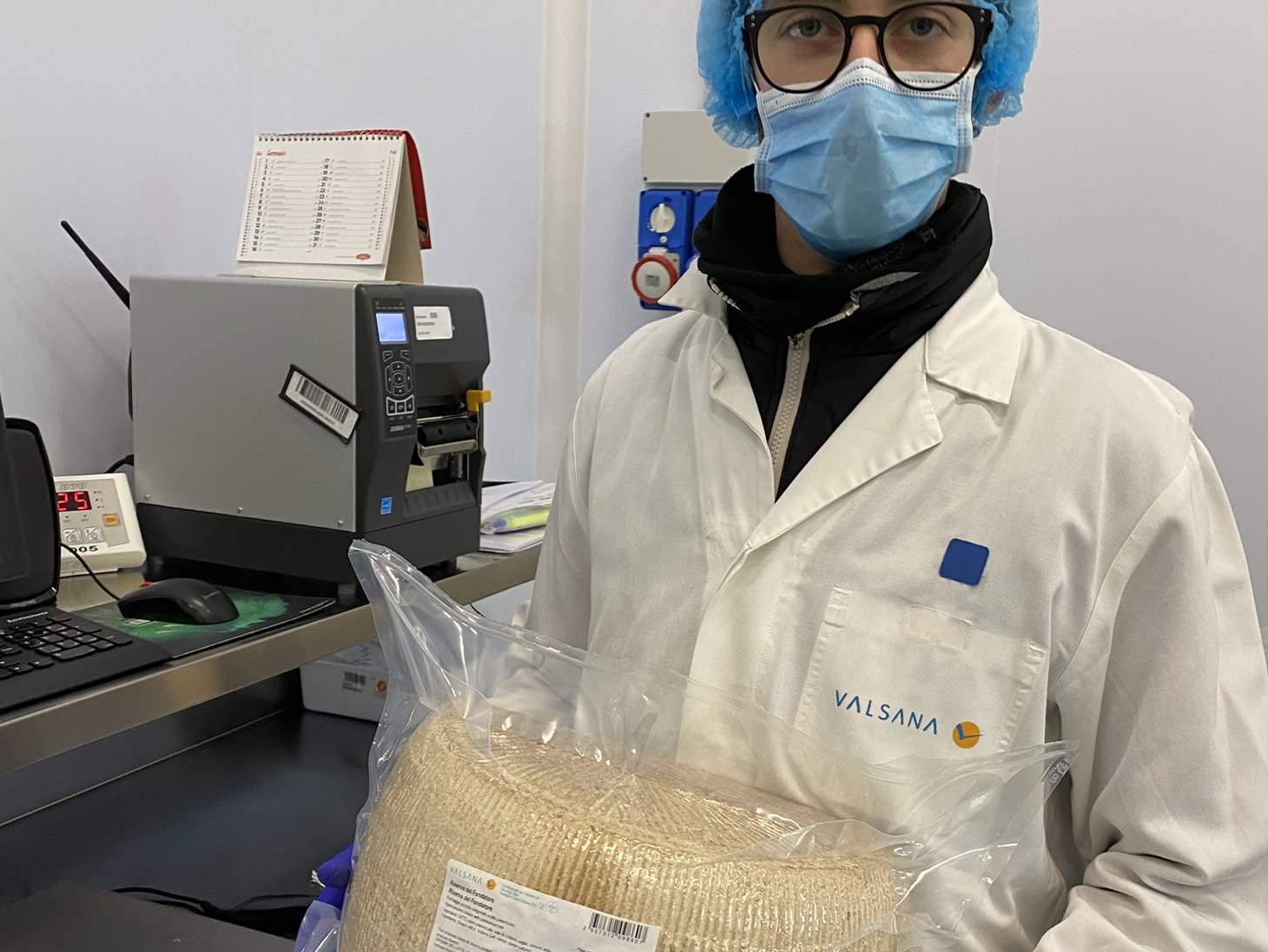 5. CRAFTSMANSHIP
5. CRAFTSMANSHIP
All the activities Enrico does during the day are essentially hand-made, just supported by a couple of machines: the cutter, used only for some cheeses, and the vacuum packaging machine.
The first part of the job involves checking the production plans envisaged for the day and scheduling activities, choosing which plan to give priority. Enrico then manually picks up the cheeses to be cut selecting, according to his experience, which wheels to cut among those available.
He then proceeds cutting cheese -: with the cutter for some types of cheeses; with the rock method, by hand, for hard cheeses; with the thread, still by hand, for example for blue cheese. Once the processing has been carried out, this must also be confirmed in our WMS (warehouse management system) with the computer, to declare the number of slices created from the whole cheese, preserving the traceability of the parent batch; the bag in which it is packaged is also recorded, ensuring the traceability of the packaging too.
Finally, a specific batch number is also assigned to each process.The cheeses are then vacuum-packed , passed through the metal detector to intercept any metals eventually present within the cheese (also this is a legacy of the previous certification) and finally weighed and labeled. Many steps and many controls with the aim of ensuring a high quality freshly cut cheese, processed in the utmost respect for health and hygiene standards.
Martina Iseppon
Marketing Director



